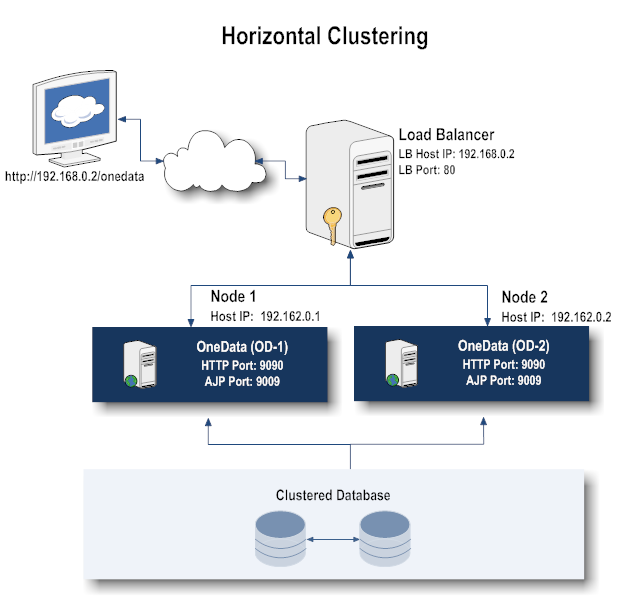Types of Clustering
You can cluster OneData vertically or horizontally. Both cluster types require Apache web server as the load balancer.
Vertical Clustering
With vertical clustering, you can deploy multiple OneData instances on a single machine. These machines must be larger and more powerful, typically housing multiple CPUs.
The following is an illustration of vertical clustering using Apache web server as the load balancer:
Horizontal Clustering
Horizontal clustering allows you to deploy multiple cluster nodes, each having a single instance of OneData installed. This type of clustering is used when there are multiple machines that have lower processing capacity than the machines used in vertical clustering.
In case of machine shutdowns, horizontal clustering provides better support for failover than vertical clustering because multiple machines are used.
The following is an illustration of horizontal clustering using Apache web server as the load balancer:
The following table describes the variables used in the clustering illustrations.
Variables | Description |
HostIP | IP address of the cluster node in which the OneData instance is installed. |
HTTPport | Port on which the OneData instances run. |
AJPport | Port used by the load balancer to communicate with a OneData instance. |
LBHostIP | IP address of the load balancer machine. |
LBport | Port on which the load balancer runs. Default port: 80 |


